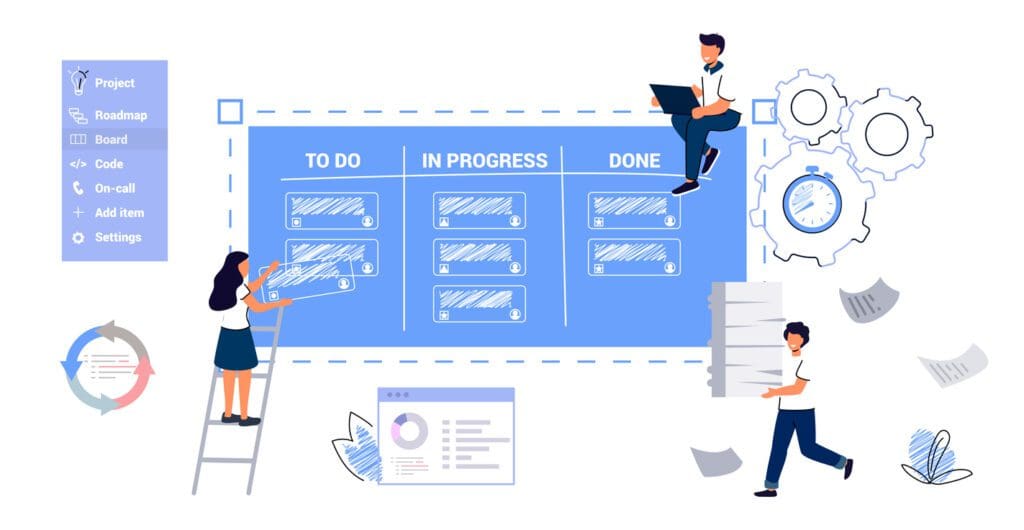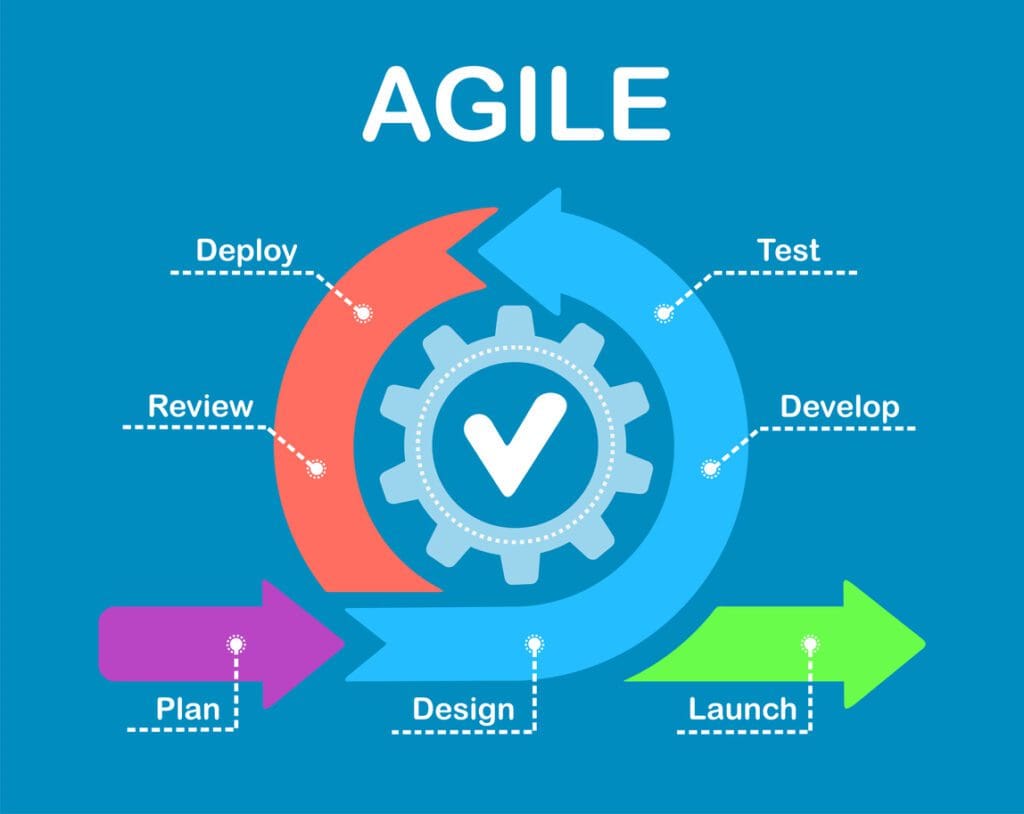Table of Contents
What is the difference between Agile & Traditional project management?
Project management is essential for organisations to achieve their goals and objectives efficiently. There are two main approaches to project management: traditional and agile.
Traditional project management involves a linear approach to planning, executing, and monitoring projects, while agile project management emphasises collaboration, flexibility, and continuous improvement.
In this article, we will explore the differences between traditional and agile project management and their respective strengths and weaknesses.
Traditional Project Management
Traditional project management is a linear approach to managing projects. It involves a step-by-step process of planning, executing, and closing a project. In this approach, the project manager defines the requirements and creates a detailed plan outlining the project’s scope, budget, and timeline. The team executes the plan, and the project manager monitors progress to ensure the project stays on track.
Benefits of Traditional Project Management
- Traditional project management offers several benefits, including:
- A structured approach to project management
- A clear definition of project requirements
- A comprehensive project plan that outlines the scope, budget, and timeline
- A focus on minimising risk
Limitations of Traditional Project Management
However, there are also limitations to traditional project management, including:
- A lack of flexibility
- Limited customer collaboration
- A focus on process rather than people
- A tendency to prioritise deliverables over customer satisfaction
Agile Project Management
Agile project management is an iterative approach to managing projects. It involves breaking a project into smaller, more manageable tasks and delivering them in short sprints. In this approach, the project manager collaborates with the team and the customer to define project requirements and adjust the project plan as needed.
Benefits of Agile Project Management
- Agile project management offers several benefits, including
- Flexibility to adjust project requirements and plans
- Increased customer collaboration and satisfaction
- A focus on delivering a high-quality product
- A more people-centric approach to project management
Benefits of Using Agile With OKR
Agile and OKR (Objectives and Key Results) are two methodologies organisations employ to enhance performance and accomplish strategic goals. Agile is a project management approach that emphasises adaptability and collaboration through iterative processes, while OKR is a goal-setting framework that emphasises accountability and alignment. These methodologies can assist organisations in adjusting to changes, remaining focused on their goals, and continuously enhancing their performance.
Limitations of Agile Project Management
However, there are also limitations to agile project management, including:
- Limited predictability
- A lack of structure in project planning
- Difficulty managing complex projects
- A potential for scope creep
Steps Involved in Agile vs Traditional Project Management
The main difference between the steps involved in traditional vs agile project management is the approach to project planning and execution. Traditional project management follows a linear, sequential approach, whereas agile project management takes an iterative and adaptive approach.
In traditional project management, the steps involved are typically:
- Initiation: defining the project scope and objectives and identifying stakeholders.
- Planning: developing a detailed project plan, including timelines, budget, and resource allocation.
- Execution: carrying out the project plan, including task assignment, monitoring progress, and managing resources.
- Monitoring and Control: tracking progress against the plan, identifying and addressing issues, and making necessary adjustments.
- Closing: concluding the project, including finalising deliverables and obtaining stakeholder approval.
Agile Project Management involves the following steps:
- Project Visioning: Defining the overall goal and direction of the project.
- Product Backlog Creation: Defining the features or requirements for each iteration.
- Sprint Planning: Planning and selecting the features to be delivered in the next sprint.
- Sprint Execution: Developing and testing the features during the sprint cycle.
- Sprint Review: Presenting and reviewing the developed features with stakeholders and making adjustments for the next sprint.
- Sprint Retrospective: Reflecting and improving the team’s performance during the sprint.
- The agile approach emphasises flexibility, collaboration, and rapid adaptation to changing requirements, whereas the traditional approach prioritises structure, planning, and strict control.
Agile vs Traditional Project Management: A Comparison
To better understand the differences between agile and traditional project management, let’s compare the two approaches using a table:
| Aspect | Traditional Project Management | Agile Project Management |
| Approach to project management | Linear approach | Iterative approach |
| Project requirements | Defined at the beginning of the project | Continuously defined and adjusted throughout the project |
| Customer collaboration | Limited | Extensive |
| Focus | Process | People |
| Flexibility | Limited | High |
| Predictability | High | Low |
| Planning | Comprehensive and detailed | High-level and adaptable |
| Complex projects | Suitable for well-defined and straightforward projects | Suitable for complex and constantly changing projects |
| Methodology | Traditional methods, such as Waterfall | Agile frameworks such as Scrum |
| Team members | Specialised roles with clearly defined responsibilities | Collaborative and cross-functional teams |
| Quality | Emphasis on delivering on time and within budget | Emphasis on delivering a high-quality product |
| Initiation planning, execution monitoring, and closure | Strictly sequential process | Iterative process |
| Feedback | Limited | Continuous and frequent |
| Risk | Managed upfront | Continuously assessed and managed |
| Linear approach | Yes | No |
Why Agile is considered better than Traditional project management
- Flexibility: Agile methodology allows for flexibility in adapting to changes and addressing issues quickly. It is suited for projects that require constant change and adaptation.
- Customer Collaboration: Agile methodology is centred around customer collaboration, which allows for better communication and understanding of the customer’s needs. This helps to ensure that the project delivers the required output.
- Iterative Development: Agile methodology allows for iterative development, meaning the project can be delivered in stages. This allows for better control over the project and the ability to deliver products in smaller, more manageable increments.
- Continuous Improvement: Agile methodology allows for continuous improvement, which means feedback is used to improve the project during development. This helps to ensure that the final product meets the customer’s needs and expectations.
- Cost-Effective: Agile methodology is cost-effective as it allows for better management of resources, minimises risks, and reduces the need for rework. This leads to reduced costs and increased profitability.
- Team Collaboration: Agile methodology emphasises team collaboration, allowing better communication, idea-sharing, and problem-solving. This leads to a more motivated team essential for successful project delivery.
- Faster Delivery: Agile methodology allows for faster delivery of products as it emphasises iterative development, continuous improvement, and collaboration. This leads to faster time to market, which is essential for staying ahead of the competition.


To Conclude
The choice between agile and traditional project management ultimately depends on the project’s specific needs, requirements, and team dynamics.
Traditional project management offers a structured approach and a clear definition of project requirements, while agile project management emphasises flexibility, customer collaboration, and continuous improvement. The choice between the two approaches depends on the project’s nature, team, and customer needs.
Agile project management is often better than traditional project management for projects requiring flexibility, customer collaboration, and iterative development. However, traditional project management may be more suitable for well-defined, straightforward projects requiring a strictly sequential process.
Ultimately, the success of a project management approach depends on the project manager’s ability to adapt the methodology to the project’s unique needs and effectively manage the project team and resources.
By choosing the right project management approach and implementing it effectively, organisations can achieve their project goals and deliver high-quality products that meet their customer’s needs and expectations.



